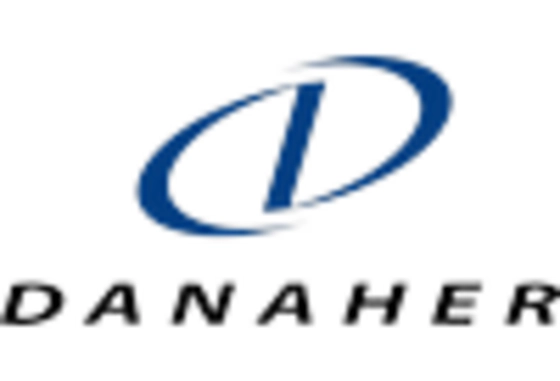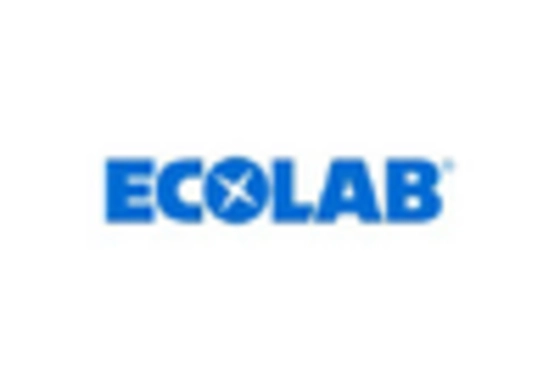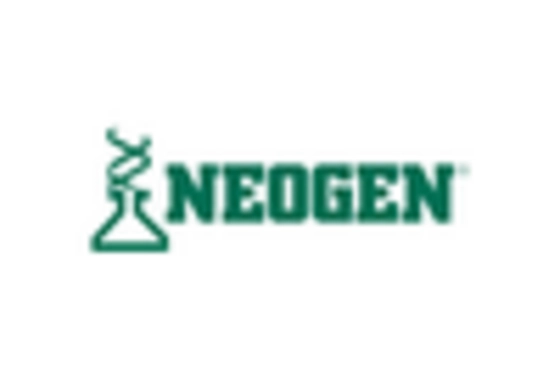Rising Consumer Awareness
The Food Safety Products Market is experiencing a notable surge in consumer awareness regarding food safety. As individuals become more informed about the potential health risks associated with foodborne illnesses, they are increasingly demanding higher safety standards from food producers. This heightened awareness is driving the adoption of food safety products, as consumers seek assurance that the products they purchase are safe for consumption. According to recent data, the market for food safety products is projected to grow at a compound annual growth rate of approximately 7.5 percent over the next five years. This trend indicates a robust demand for innovative solutions that enhance food safety, thereby propelling the Food Safety Products Market forward.
Technological Advancements
Technological advancements play a pivotal role in shaping the Food Safety Products Market. Innovations such as real-time monitoring systems, blockchain technology, and advanced testing methods are revolutionizing how food safety is managed. These technologies not only improve the efficiency of food safety processes but also enhance traceability and transparency within the supply chain. For instance, the integration of IoT devices allows for continuous monitoring of food storage conditions, thereby reducing the risk of contamination. As these technologies become more accessible, the Food Safety Products Market is likely to witness an influx of new products designed to meet the evolving needs of consumers and regulatory bodies alike.
Stringent Regulatory Frameworks
The Food Safety Products Market is significantly influenced by stringent regulatory frameworks established by various governmental bodies. These regulations are designed to ensure that food products meet specific safety standards, thereby protecting public health. Compliance with these regulations often necessitates the use of advanced food safety products, which can help businesses adhere to legal requirements. For example, the implementation of the Food Safety Modernization Act has led to increased scrutiny of food production processes, compelling manufacturers to invest in better safety measures. This regulatory environment is expected to drive growth in the Food Safety Products Market as companies seek to avoid penalties and maintain consumer trust.
Impact of E-commerce on Food Safety
The rise of e-commerce is reshaping the Food Safety Products Market in profound ways. As more consumers turn to online shopping for their food needs, the demand for safe and reliable food products has intensified. E-commerce platforms are increasingly held accountable for the safety of the products they sell, leading to a greater emphasis on food safety measures. This shift is prompting retailers to invest in food safety products that ensure compliance with safety standards and enhance consumer confidence. The e-commerce food market is projected to grow significantly, which may further drive the Food Safety Products Market as businesses adapt to the changing landscape of food distribution.
Growing Demand for Organic and Natural Products
The Food Safety Products Market is witnessing a growing demand for organic and natural food products, which often come with heightened safety concerns. As consumers increasingly prioritize health and wellness, they are more likely to scrutinize the safety measures associated with organic foods. This trend is prompting producers to adopt more rigorous food safety practices and invest in products that ensure the integrity of organic offerings. Market data suggests that the organic food sector is expanding at a rate of approximately 10 percent annually, which in turn is likely to bolster the Food Safety Products Market as businesses strive to meet consumer expectations for safety and quality.

















Leave a Comment